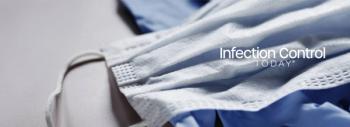
New Way to Tap Largest Remaining Pool of Potential New Antibiotics
Scientists are reporting use of a new technology for sifting through the world's largest remaining pool of potential antibiotics to discover two new antibiotics that work against deadly resistant microbes, including the superbugs known as methicillin-resistant Staphylococcus aureus (MRSA). Their report appears in the Journal of the American Chemical Society.
Sean Brady and colleagues explain that an urgent need exists for new medications to cope with microbes that shrug off the most powerful traditional antibiotics. MRSA infections, for instance, are resistant to most known antibiotics. MRSA strikes at least 280,000 people in the U.S. alone every year, and almost 20,000 of those patients die. The typical way of discovering new antibiotics involves identifying and growing new bacteria from soil and other environmental samples in culture dishes in the laboratory. That environmental treasure-trove is the largest remaining potential source of new antibiotics. Researchers then analyze the bacteria to see if they make substances that could be used as antibiotics to kill other microbes. But most bacteria found in nature can't grow in the laboratory. That's why Brady and colleagues took a new approach to this problem.
The researchers removed DNA from soil bacteria that wouldn't grow in the lab. Then, they put this DNA into different bacteria that do grow well in culture dishes, and these bacteria acted like incubators for the new DNA. The approach enabled Brady's team to study the substances made by the soil bacteria's DNA in the lab. With this "metagenomics" method, they identified two new possible antibiotics called fasamycin A and fasamycin B that killed MRSA and vancomycin-resistant Enterococcus faecalis, which also is becoming more resistant to known antibiotics. They also determined how the new antibiotics work. "Metagenomics has the potential to access large numbers of previously inaccessible natural antibiotics," say the researchers.
The researchers acknowledge funding from the National Institutes of Health and the Howard Hughes Medical Institute.
Newsletter
Stay prepared and protected with Infection Control Today's newsletter, delivering essential updates, best practices, and expert insights for infection preventionists.






